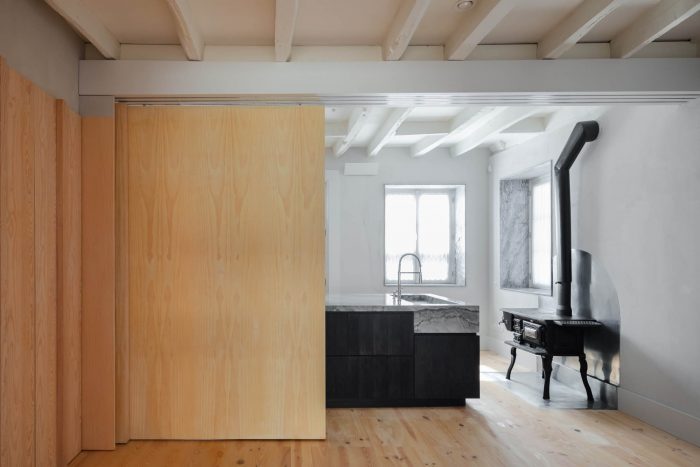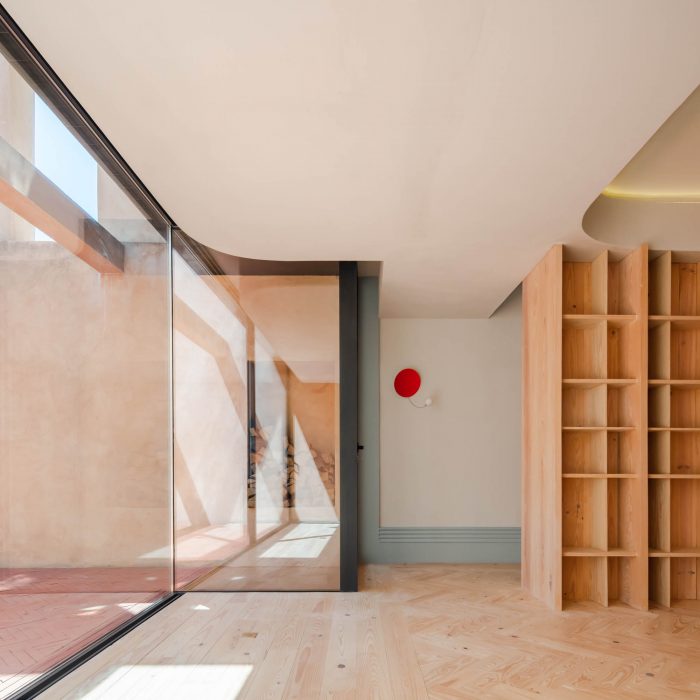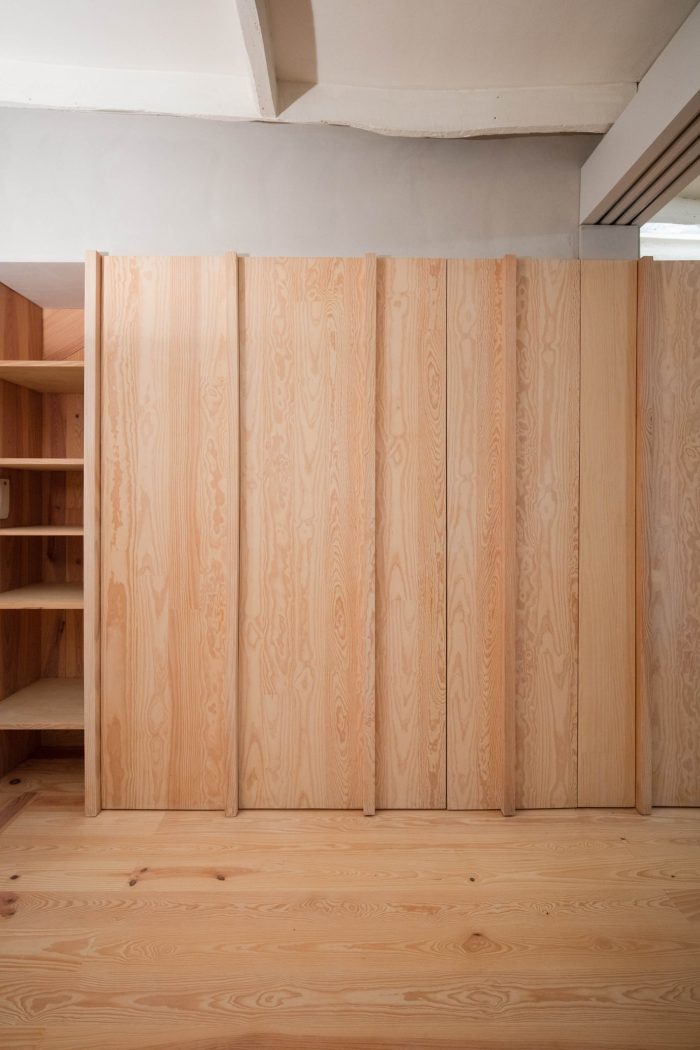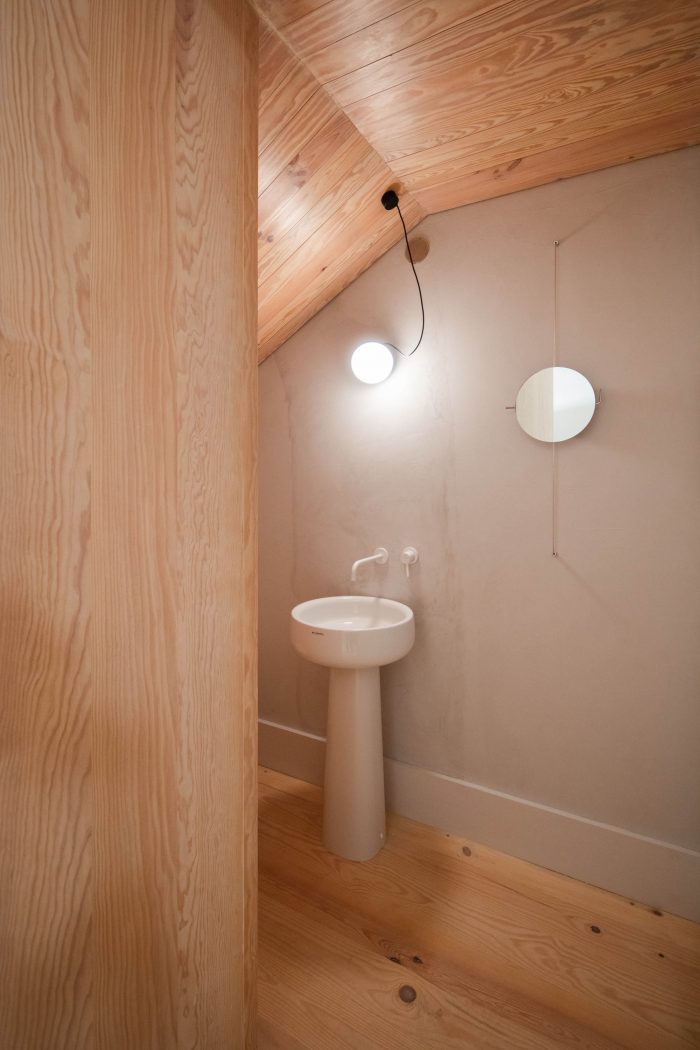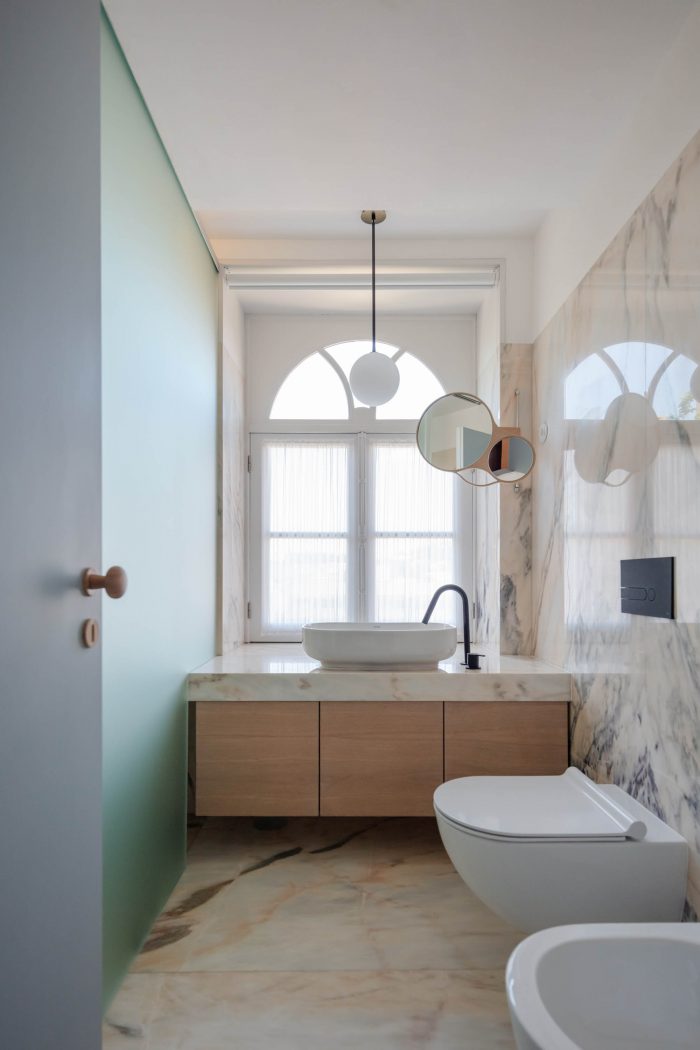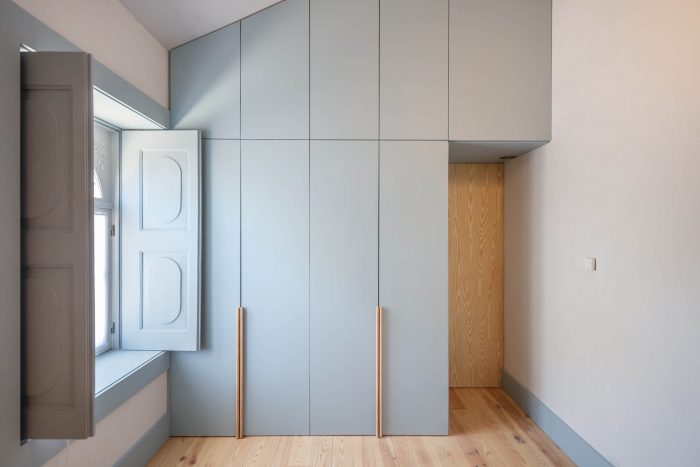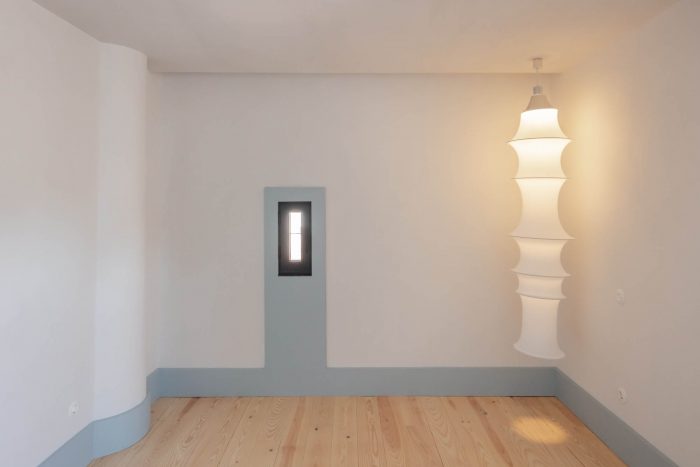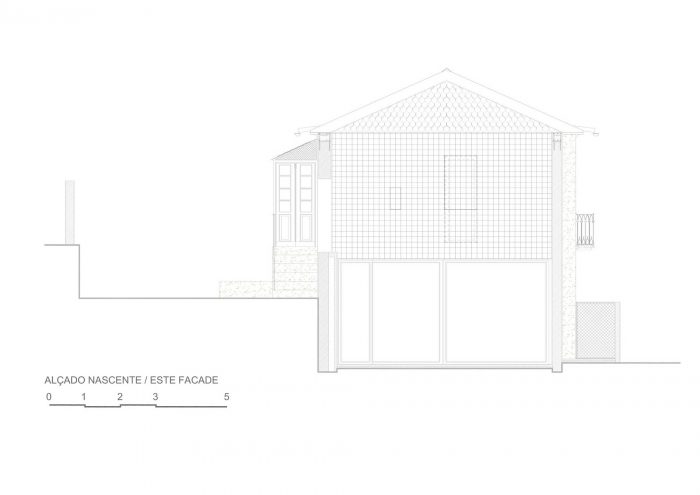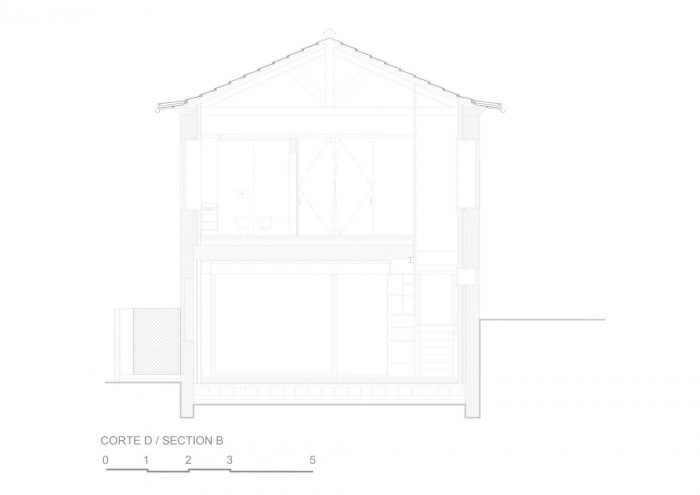该建筑位于吉马良斯市中心郊区的特别保护区内,自2001年起被联合国教科文组织列为世界文化遗产。这是一栋上世纪30年代的单户住宅,裸露的石砌墙、木质地板和盖板结构、铁栏杆、木质窗框,其有机图案的灵感来自 “大地 “和 “大海”。新艺术主义影响的痕迹也是存在的。20世纪80年代,该建筑曾是干预的对象,它的内部被完全破坏,并在东侧扩大了原有的建筑,对其进行了深刻的误判。
This building is located in a Special Protection Zone, on the outskirts of the city center of Guimarães, which is classified by Unesco as a World Heritage Site since 2001. It is a single-family house from the 1930s, with exposed stone masonry walls, wooden floor, and cover structures, iron railings, and wooden window frames with organic motifs inspired by the “earth” and “sea”. Traces of Art Nouveau influence are also present. The building was the object of an intervention in the 1980s, which completely destroyed its interior and expanded the original construction on the east side, deeply mischaracterizing it.
干预措施建议拆除一切多余的东西,只保留原有的建筑,并修复其特征:花岗岩砌筑的墙体,与原设计相同的木质窗框,修复现有的栏杆,马赛式的自然色陶瓷屋顶瓦片,以及 “卡努多 “瓦片的屋檐,并由将修复的现有木质结构支撑。只有东面的立面,由于在20世纪80年代的扩建中拆除了整个室内的建筑,面向外院,获得了新的现代形象,全玻璃的盆景顶上有一面 “盲人 “墙。这样的墙体被瓷砖和平坦的景观屋顶覆盖。干预的开始是假设修复所有最初的建筑特征,拒绝 “过去式 “和 “立面式”。
The intervention proposes the demolition of everything that is superfluous, maintaining only the original construction and the rehabilitation of what characterizes it: granite masonry walls, wooden window frames identical to the original design, repair of existing railings, ceramic roof tile covering in natural color, of Marseille type, and eaves in “Canudo” tile, supported by the existing wooden structure that will be rehabilitated. Only the east façade, facing the outer courtyard as a result of the demolition of the entire interior during the 1980s expansion, gains a new contemporary image, with a full glass potting topped off by a “blind” wall. Such wall is covered with tiles and a flat landscaped roof covering. The intervention started with the assumption of rehabilitating all that initially characterized the building, rejecting the “pastische” and the “façadisme”.
它诉诸于对原有材料和结构的修复、维护和保护,同时结合传统的建筑技术。不久之后,可持续发展被融入到材料、技术、资源和当地知识的使用中(如油性涂料和天然颜料、石灰抹灰、软木的保温材料等),使用电力等清洁能源的高效供暖和制冷设备,以及被动式供暖和制冷系统中。”就像一棵树一样,这栋建筑有它的根,给接纳它的人以阴凉和保护,有它美丽的时刻,就像它的诞生一样,有一天,它在度过它的一生之后,也会死去。它并不是真正意义上的不可触摸的永恒处女,而是男人为男人所做的简单小作品”。见Fernando Távora,拱门,1963年。
It resorted to the repair, maintenance, and conservation of the original materials and structures combined with traditional construction techniques at the same time. Soon after, sustainability was incorporated into the use of materials, techniques, resources, and local knowledge (such as oil paints and natural pigments, lime plasters, insulation in cork, etc., etc.), efficient heating and cooling equipment using clean energies, such as electricity, and in passive heating and cooling systems. “Like a tree, this building has its roots, gives shade and protection to those who take it in, has its moments of beauty and, as it was born, one day it will die after living its life. It is not really an untouchable and eternal virgin, but a small and simple work made by men for men”. In Fernando Távora, arch., 1963
建筑师:Cá-colectivo de arquitectura
面积:198平方米
年份:2020年
摄影:João Morgado
制造商:Azulima, BRUMA, CS Telhas, Fassa Bortolo, Sanindusa, DL cozinhas, DOFCork, Fradical, Milei, Vale da Gandara
城市:吉马雷斯
国家:葡萄牙
Architects: Cá-colectivo de arquitectura
Area: 198 m²
Year: 2020
Photographs: João Morgado
Manufacturers: Azulima, BRUMA, CS Telhas, Fassa Bortolo, Sanindusa, DL cozinhas, DOFCork, Fradical, Milei, Vale da Gandara
City:GUIMARÃES
Country:Portugal






